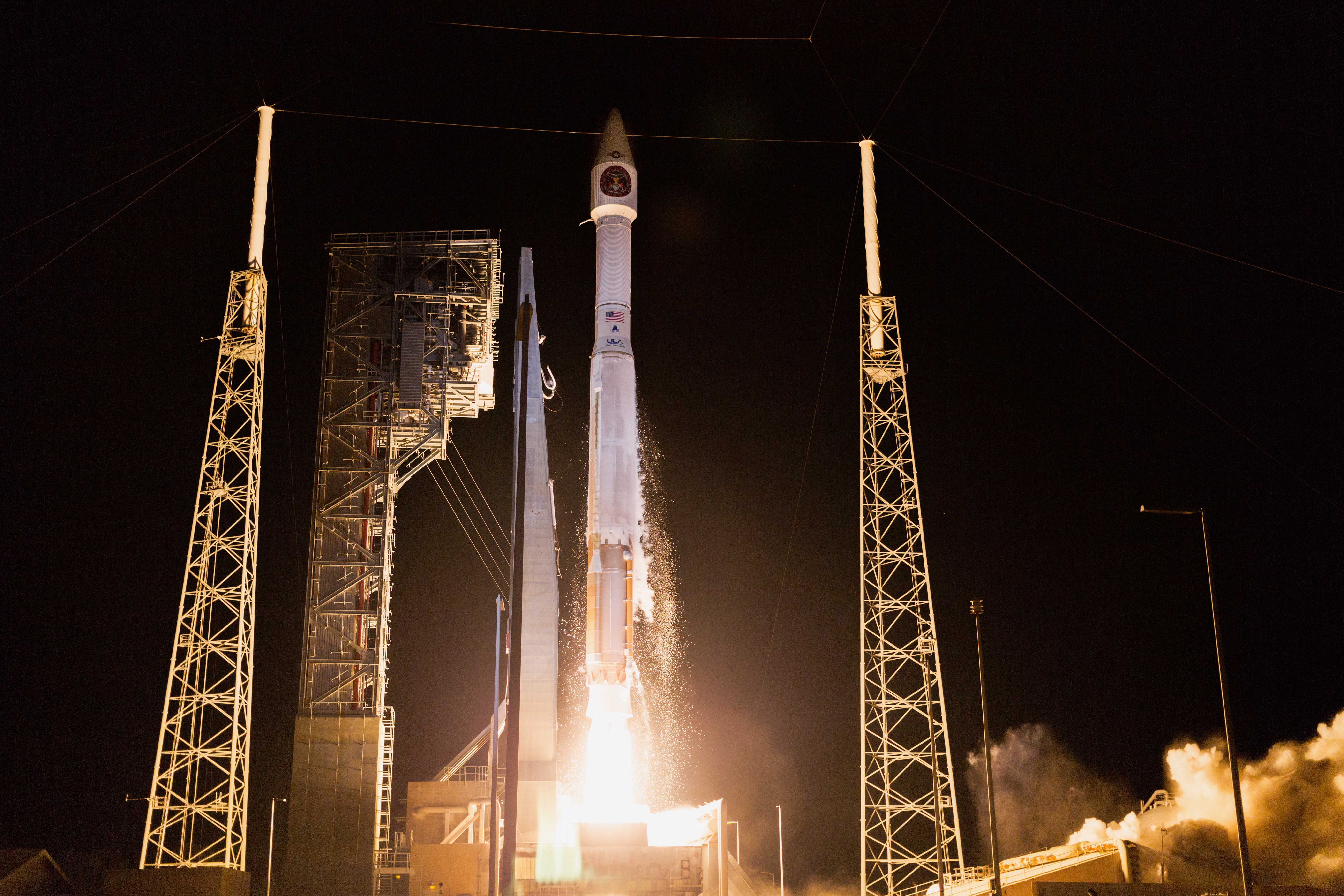Releases

CAPE CANAVERAL AIR FORCE STATION, Fla., Jan. 20, 2017 /PRNewswire/ -- After a successful evening launch, the third U.S. Air Force Space Based Infrared System (SBIRS) GEO satellite is now responding to commands as planned, approximately 37 minutes after lift-off.
Built by Lockheed Martin (NYSE: LMT), SBIRS GEO Flight 3 is equipped with powerful scanning and staring sensors that collect and transmit infrared surveillance information to ground stations. This information is used by the U.S. military to detect missile launches, support ballistic missile defense, expand technical intelligence gathering, and bolster situational awareness on the battlefield.
The satellite was launched at 7:42 p.m. EST aboard a United Launch Alliance (ULA) Atlas V rocket. Downloadable images and video b-roll of SBIRS are available here: www.lockheedmartin.com/SBIRS.
"After a successful ULA launch, signal acquisition is the first critical event in SBIRS' mission to support the Air Force with early missile warning and defense," said David Sheridan, vice president of Lockheed Martin's Overhead Persistent Infrared (OPIR) systems mission area. "With communications now established, our job begins to deliver SBIRS to its final orbit so we can complete deployments and operational testing in anticipation of the satellite's formal acceptance by the Air Force."
"Adding this third geostationary satellite to the SBIRS constellation continues our proud legacy of providing best-of-class OPIR solutions that provide real time, 24/7 data to our military and allies," said Robert Mehltretter, vice president, Northrop Grumman Military and Civil Space. "We are looking forward to seeing our sensors capture the first light of real-time world events shortly, and seeing this data delivered to the warfighter will make us proud."
The satellite will begin transitioning to its final location in geosynchronous orbit, approximately 22,000 miles above the Earth. There, the satellite's solar arrays, light shade and antennas will be deployed to begin early on-orbit testing.
SBIRS GEO-1 and GEO-2, which were launched in 2011 and 2013 respectively, continue to meet or exceed performance expectations. The satellites' sensor pointing accuracy and sensitivity for detection of targets significantly exceed specifications. While SBIRS' primary mission is strategic missile warning, infrared data will also be made available for new qualified military and civilian applications at the Air Force's recently opened Tools, Applications and Processing Lab in Boulder, Colorado.
The next satellite, GEO Flight 4, will undergo final assembly, integration and test prior to its planned 2017 launch. SBIRS GEO-5 and GEO-6, which are currently in production, incorporate a new common spacecraft bus, the modernized A2100, to dramatically reduce costs and cycle times while increasing the potential to incorporate future, modernized sensor suites.
About Lockheed Martin
Headquartered in Bethesda, Maryland, Lockheed Martin is a global security and aerospace company that employs approximately 98,000 people worldwide and is principally engaged in the research, design, development, manufacture, integration and sustainment of advanced technology systems, products and services.
SOURCE Lockheed Martin


